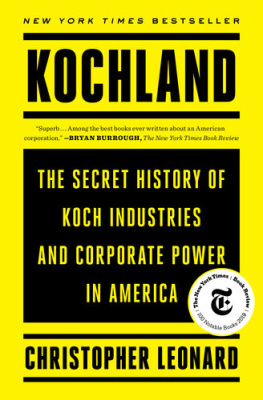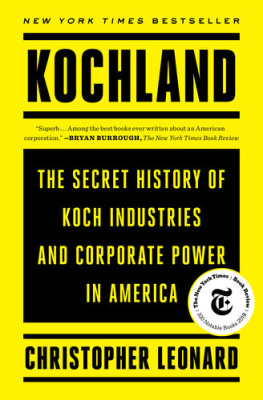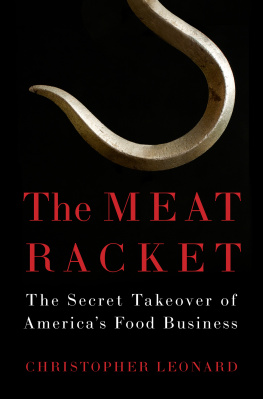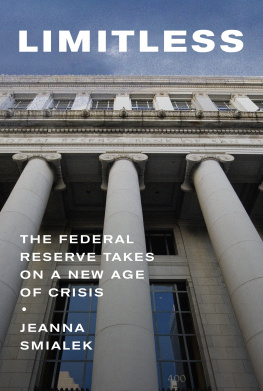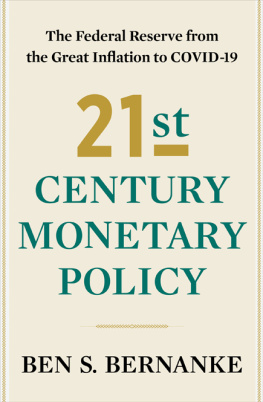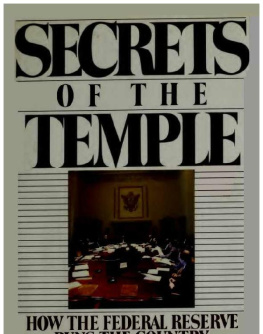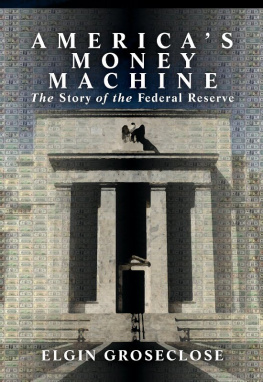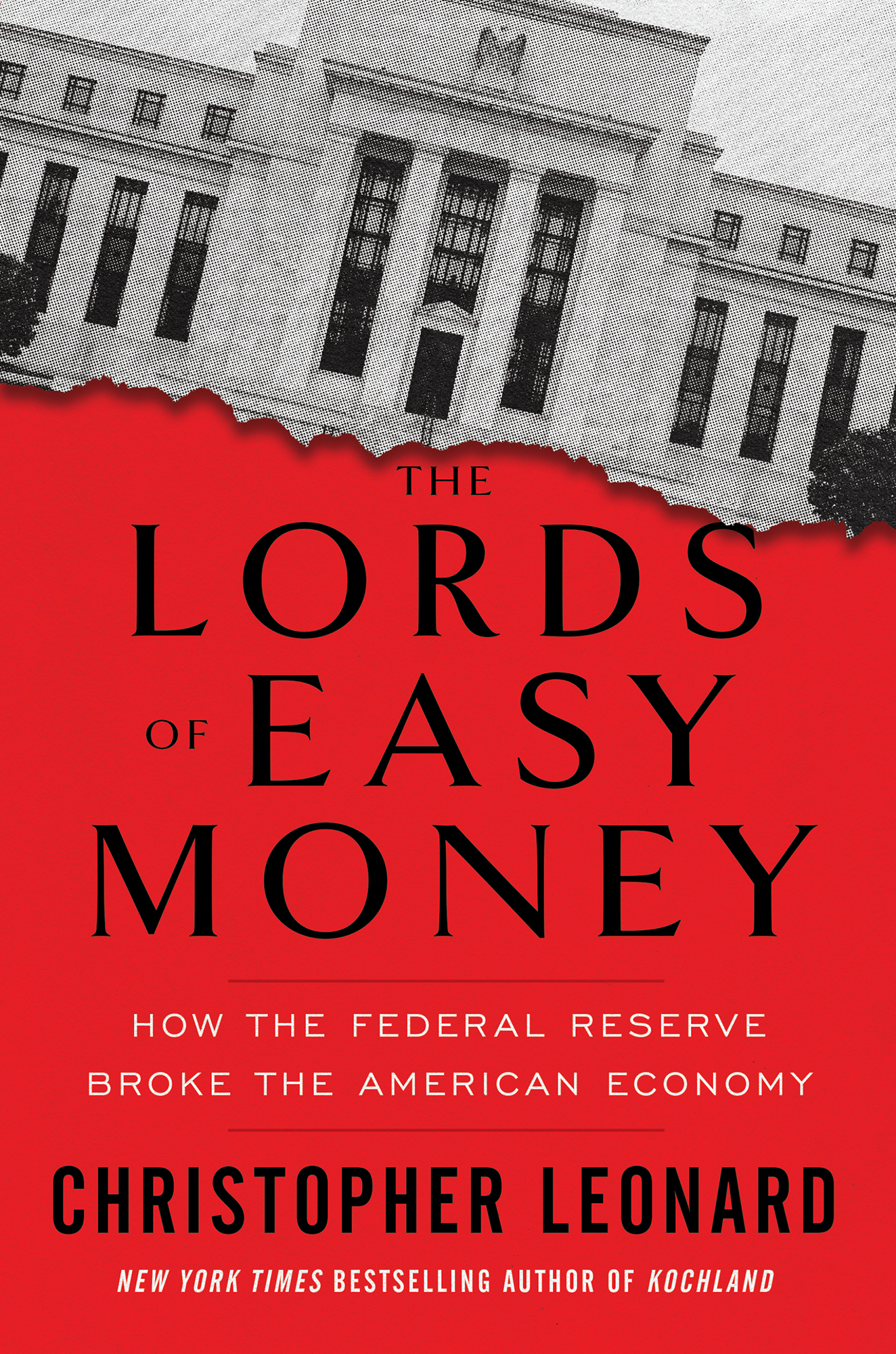Contents
Guide
The Lords of Easy Money
How the Federal Reserve Broke the American Economy
Christopher Leonard
New York Times bestselling author of Kochland
ALSO BY CHRISTOPHER LEONARD
Kochland:
The Secret Histories of Koch Industries and Corporate Power in America
The Meat Racket:
The Secret Takeover of Americas Food Business

Simon & Schuster
1230 Avenue of the Americas
New York, NY 10020
www.SimonandSchuster.com
Copyright 2022 by Christopher Leonard
All rights reserved, including the right to reproduce this book or portions thereof in any form whatsoever. For information, address Simon & Schuster Subsidiary Rights Department, 1230 Avenue of the Americas, New York, NY 10020.
First Simon & Schuster hardcover edition January 2022
SIMON & SCHUSTER and colophon are registered trademarks of Simon & Schuster, Inc.
For information about special discounts for bulk purchases, please contact Simon & Schuster Special Sales at 1-866-506-1949 or .
The Simon & Schuster Speakers Bureau can bring authors to your live event. For more information or to book an event, contact the Simon & Schuster Speakers Bureau at 1-866-248-3049 or visit our website at www.simonspeakers.com.
Interior design by Ruth Lee-Mui
Jacket design by Michael Nagin
Jacket photograph by Ullstein Bild Dtl./Getty Images
Library of Congress Cataloging-in-Publication Data has been applied for.
ISBN 978-1-9821-6663-2
ISBN 978-1-9821-6668-7 (ebook)
This book is for Joan and John Miller. Thank you so much for the support you have given, and the example you have set.
PART 1 RESPECTFULLY, NO
CHAPTER 1 GOING BELOW ZERO
(2010)
Thomas Hoenig woke up early on November 3, 2010, knowing what he had to do that day, and also knowing that he was almost certainly going to fail. He was going to cast a vote, and he was going to vote no. He was going to dissent, and he knew that this dissent would probably define his legacy. Hoenig was trying to stop something: A public policy that he believed could very well turn into a catastrophe. He believed it was his duty to do so. But the wheels were already turning to make this policy a reality, and the wheels were far more powerful than he was. The wheels were powered by the big banks on Wall Street, the stock market, and the leadership of Americas Federal Reserve Bank. Everyone knew that Hoenig was going to lose that day, but he was going to vote no anyway.
Hoenig was sixty-four years old, and he was the president of the Federal Reserve Bank of Kansas City, a position that gave him extraordinary power over Americas economic affairs. He was in Washington that morning because he sat on the Federal Reserves powerful policy-making committee, which met every six weeks to effectively determine the value and quantity of American money. Most people in America dont think very much about moneymeaning the actual currency, or that thing we call a dollar. The word dollar is, in fact, just a slang term for American currency, which is actually called a Federal Reserve note. People spend Federal Reserve notes every day (if theyre lucky enough to have them), but they rarely think about the complex, largely invisible system that makes money appear out of thin air. This system is the U.S. Federal Reserve System. The Fed, Americas central bank, is the only institution on Earth that can create U.S. dollars at will.
Because he was a senior official at the Federal Reserve, Thomas Hoenig had to think about money all the time. He thought about it in the same way that a very stressed-out building superintendent might think about plumbing and heating. Hoenig had to think about money as a system to be managed, and to be managed just right. When you ran the system that created money, you had to do your job carefully, with prudence and integrity, or else terrible things might happen. The building might flood or catch on fire.
This is why Hoenig felt so much pressure when he woke up that November morning in Washington, D.C. He was staying at a very nice hotel, called the Fairmont, where he always stayed when he traveled from his home in Kansas City to the nations capital. Hoenig was in town for the regular meeting of the Federal Open Market Committee, or FOMC for short. When the committee met in Washington, its members voted and set the course of the Feds actions. There were twelve members on the committee, which was run by the powerful chairman of the Federal Reserve.
For a year now, Hoenig had been voting no. If you tallied his votes during 2010, the tally would read: no, no, no, no, no, and no. His dissents had become expected, but they were also startling if you considered Tom Hoenigs character. He wasnt, by nature, anything close to a dissident. He was a rule-follower. He was born and raised in a small town, where he started working at the family plumbing shop before he was ten years old. He served as an artilleryman in Vietnam, and when he came home he didnt protest against the war. Instead, he studied economics and banking at Iowa State, earning a PhD. His first job out of school was as an economist with the Federal Reserve regional bank in Kansas City, in the supervision department. At the Fed, he went from being a rule-follower to being a rule-enforcer. Hoenig rose through the ranks to became president of the Kansas City Fed in 1991. This was the job he still held in 2010. His responsibilities as one of twelve regional Fed bank presidents illuminate the structure of Americas money system. The Federal Reserve system is unlike any other in the world; it is a crazy genetic mashup of different animals, part private bank and part government agency. People talk about the Fed as if it were a bank, but it is really a network of regional banks, all controlled by a central office in Washington, D.C. Hoenig had all the fiery disposition that one might expect from a regional Fed president, which is to say none at all. He was soft-spoken, civil, wore cuff links and pin-striped suits, and spent his days talking about things like capital requirements and interest rates. Hoenig was an institutionalist, and a conservative in the little c sense of the word.
And yet here he was, in late 2010, a dissident.
After he woke up in his hotel room, Hoenig had some time alone before the big day started. He gathered his thoughts. He shaved, put on a suit, knotted his tie, and gathered his papers. If he had any doubts about what he was going to do that day, he didnt advertise them. He had spent months, years, even decades preparing for this action. His vote would reflect everything hed learned during his career at the Fed. He was trying to apply what he knew to help the Federal Reserve navigate through extraordinary times.
The American financial system had broken in late 2008, after the investment bank Lehman Brothers collapsed. That moment marked a threshold for people like Tom Hoenig. Economists and central bankers describe the ensuing panic as the Global Financial Crisis, eventually bestowing the moment with its own biblical label, the GFC. The world of central banking was neatly divided into two eras. There was the world pre-GFC and the world post-GFC. The GFC itself was apocalyptic. The entire financial system experienced a total collapse that risked creating another Great Depression. This would mean years of record-high unemployment, economic misery, political volatility, and the bankruptcy of countless companies. The crisis prompted the Federal Reserve to do things it had never done before. The Feds one superpower is its ability to create new dollars and pump them into the banking system. It used this power in unprecedented ways after Lehmans collapse. So many of the financial charts that capture the Feds actions during this period look like the same charta flat line that bounces along in a stable range for many years, which then spikes upward like a reverse lightning bolt. The upward spikes capture the unprecedented amount of money the Fed created to combat the crisis. Between 1913 and 2008, the Fed gradually increased the money supply from about $5 billion to $847 billion. This increase in the monetary base happened slowly, in a gently uprising slope. Then, between late 2008 and early 2010, the Fed printed $1.2 trillion. It printed a hundred years worth of money, in other words, in little over a year, more than doubling what economists call the monetary base. There was one very important characteristic of all this new money. The Fed can create currency in just one way: It makes new dollars and deposits them in the vaults of big banks. Only about twenty-four special banks and financial institutions have the privilege of getting these pristine dollars, making those banks the seedbed of the money supply. The amount of excess money in the banking system swelled from $200 billion in 2008 to $1.2 trillion in 2010, an increase of 52,000 percent.

